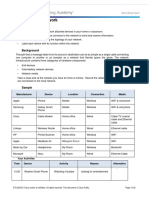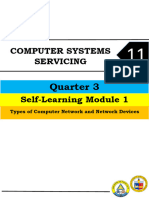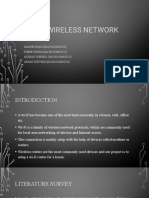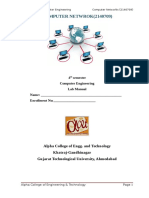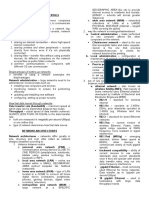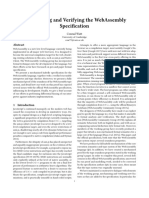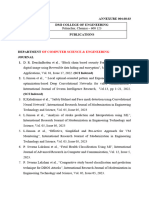Cambridge International School (CIS)
Computing Project – Grade 9
Create a presentation about your home network that shows how all the devices connected to each other and
to the internet. Make 10 slides.
Notes:
Ensure that each slide is visually appealing, with relevant graphics or diagrams to enhance understanding.
Incorporate bullet points or short sentences to convey information concisely.
Use Microsoft PowerPoint inside the lab and guide students to type the following below:
The project title (Home Network)
Slide 1: Title Slide
Title: "Home Network Overview"
Subtitle: "Connecting Devices and the Internet"
Brief Introduction: Welcome to our presentation on home networks. Today, we'll explore how
various devices in a typical household are interconnected and connected to the internet for
seamless communication and entertainment.
Slide 2: Introduction to Home Networks
Definition: A home network is a system of interconnected devices within a household that
enables communication, sharing of resources, and access to the internet.
Importance: Home networks facilitate convenient access to information, entertainment, and
communication among family members.
Slide 3: Components of a Home Network
Modem: Device that connects the home network to the internet.
Router: Distributes internet connection to multiple devices within the home.
Devices: Examples include computers, smartphones, tablets, smart TVs, gaming consoles, and
smart home devices.
Slide 4: Connecting to the Internet
Modem Connection: Illustration showing the modem connected to the ISP (Internet Service
Provider).
Router Connection: Demonstration of how the router receives internet from the modem and
distributes it to devices.
Slide 5: Wired Connections
Desktop PC: Connected to the router via Ethernet cable for stable and high-speed internet
access.
� Cambridge International School (CIS)
Printer: Connected to the router for shared printing capabilities among family members.
Slide 6: Wireless Connections
Laptop: Uses Wi-Fi to connect to the home network and access the internet from anywhere
within range.
Smartphone/Tablet: Utilizes Wi-Fi for internet access, streaming, and communication.
Slide 7: Smart Entertainment Devices
Smart TV: Connected to the home network for streaming services like Netflix, Hulu, and
YouTube.
Streaming Device (e.g., Roku, Apple TV): Connected to the TV to stream content from various
online platforms.
Slide 8: Gaming and Multimedia
Game Console: Connected to the home network for online gaming, downloading games, and
media streaming.
Multimedia Devices (e.g., Chromecast): Wirelessly connected to the network for streaming
content from mobile devices to the TV.
Slide 9: Smart Home Devices
Smart Thermostat, Smart Lights, Smart Cameras: Connected to the home network for remote
control and monitoring via smartphone apps.
Home Assistants (e.g., Amazon Echo, Google Home): Connected to the internet for voice
commands and smart home automation.
Slide 10: Conclusion and Future Outlook
Recap: Summarize key points covered in the presentation, emphasizing the interconnected
nature of home networks.
Future Outlook: Discuss potential advancements such as increased integration of smart
devices, faster internet speeds, and enhanced security measures.
Submission Notes:
The deadline is the 2nd of May, 2024.
You can use the computing lab during the period to finish your project, or it is better to prepare it at
home.
Send the project by e-mail to ( ) or submit it if it is done inside the computing lab.














